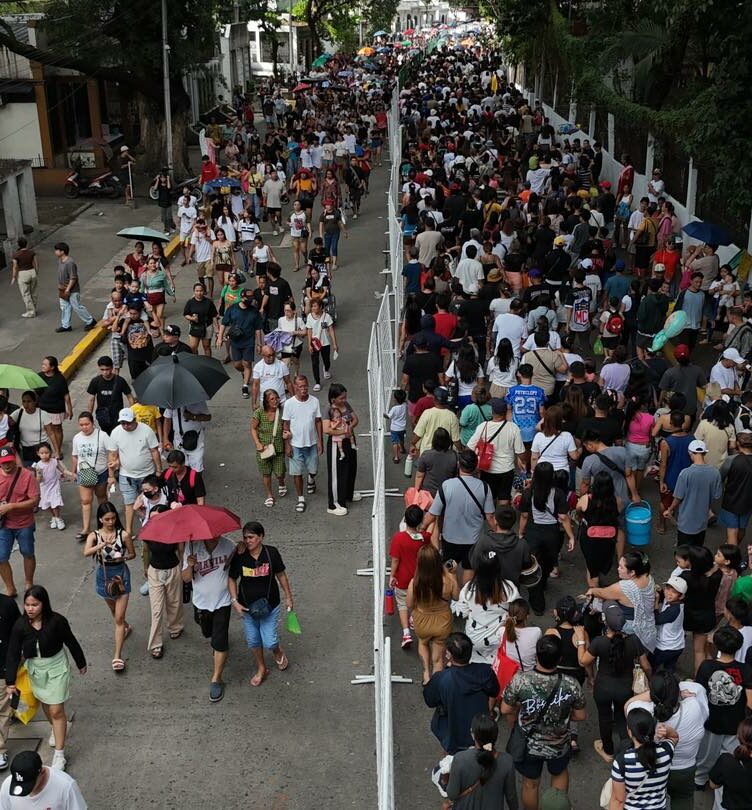BLACK clothes, tight jeans, smudged black eyeliners, black nail polish, crazy hairstyles, bulky silver accessories. These were what emos of the previous generation often sported.
The subculture of emo, a shortened term for the word emotional, emerged in the 1980s in Washington, D.C., as a subgenre of punk rock music. It is often associated with social alienation, teenage angst, introversion, hostility, and sensitivity.
However, emo’s popularity dwindled due to the rise of other social trends and subcultures.
Although not as popular as before, some young people have recently immersed themselves in the subculture and have been reviving its lost flame for creativity, identity, and self-expression.
republicasia met three Filipino Gen Z emos and heard their stories.
Meet the modern emo kids.
Ali (they/them), 20, Potpot (he/him), 22, and Séance (he/him), 22, consider themselves emos.
Séance, a literature major, said there are currently many people engaged in the emo subculture. He conceded the emo community is not as loud as in the ’80s.
“Contrary to popular belief, there are still a lot of us. But I guess it wouldn’t fit the Western standard, but we do exist,” he said.
He also explained that their subculture is mainly rooted in the 1980 bands, including The Cure and Siouxsie and the Banshees. Séance said the emo subculture is the same as it was in the 80s and still primarily revolves around music.
How they started and their families’ reactions
Engineering student Potpot proudly shared that his mother was openly supportive of how he dresses, except for the piercings. Nonetheless, Potpot’s mom was tolerant of how he expressed himself.
“Hindi niya ako dini-discourage na ‘ano ba ‘yan? Ano na namang suot mo?’ ganun. So okay lang sa kaniya na ganito ako,” he added.
On the other hand, Potpot’s romantic partner, Ali, said they started styling themself with black clothes when they were around 11 years old.
Ali is a nursing student now and is required to wear an all-white uniform. The 20-year-old said they would bring black clothes after class or hospital duties.
“Nursing student po ako, so lagi akong nakawhite,” Ali told republicasia. “Lagi po akong nagbabaon ng damit [na pamalit] sa school na kulay black.”
Meanwhile, Séance shared that he started wearing black initially for “teenage angst reasons.”
“I feel like, in a way, it also reflects the chaos of being a teenager,” he added.
Séance confessed that his family was afraid he had joined a satanic cult.
“At first, they were kind of scared na parang ‘hala, ano ‘yan, nagwo-worship ka ba sa demonyo?’” the literature major said with a laugh. But later on, as per Séance, his family was able to accept that this is his way of expressing himself.
Emo and gender awareness
Through the emo subculture, Ali and Séance could identify with their gender and sexuality.
As per Séance, immersing into the subculture helped him come to terms with the fact that he is pansexual, transmasculine, and nonbinary.
“I actually used to think I was gender fluid. And then when I was 18, I thought I was just non-binary. And when I was 20, that’s when I was oh, I’m transmasculine, non-binary,” Séance told republicasia in an interview.
Ali, on the other hand, uses the subculture to express their sexuality the way they want as a gender-fluid individual.
“Minsan po, gusto ko na paran ayun, babae ako. Minsan gusto ko, lalaki ako so depende rin po ‘yun sa pananamit ko. Kunwari, ganitong araw, gusto ko, pogi ako tingnan. So ‘yun po, damit ko po mga pantalon, jacket or shirts. Minsan po, pag gusto kong feminine ako, nagso-shorts po ako, maikli. Ganito po,” said Ali.
Harshest thing ever heard.
Although not considered an offense, Potpot told republicasia that he was once asked if he was gay because of the kind of clothes he wears. He is a cis male or a straight man in lay terms.
“Hindi siya harsh, kasi hindi naman siya offensive, pero merong nagsabi, ‘Bakit ka naka-skirt? Bakla ka ba?’ Hindi naman siya nakaka-offend kasi hindi naman nakaka-offend ‘yung bakla,” the 22-year-old said.
On the other hand, the harshest thing that Séance experienced was being misgendered because of him physical traits.
“I [used] to feel so bad that ‘no one would ever feel that,’ ‘you can’t ever pass as a guy because you have boobs,’ parang ganon,” he cited some phrases he used to hear from people.
He also found it offensive when one of his classmates named him, and people referred to him with pronouns that he did not identify with.
According to Séance, he often hears these statements from people after telling them about his gender and sexual identity: “Nakakainis like ‘yung pronouns pronouns na ‘yan. Huh? Bakit ka transmasc, non-binary, bakit ka hetti na nagda-damit ka naman – pinakapakita mo naman ‘yung dede mo.”
From emos to other Gen Zs
While self-expression is unique to everyone, there are particular dilemmas we all share whenever we attempt to show our true colors to others — rejection.
But according to these Gen Z emos, you must be proud of whoever you are!
“I guess, no matter what, you identify as cisgender or not. Or whether you’re part of any marginalized community or not, I think that you should be proud of who you are,” said Séance. “Especially if you’re not a bigot, if you’re not a transphobe or a homophobe. Be proud of who you are!”
Watch more of Ali, Potpot, and Séance here.
How useful was this post?
Click on a star to rate it!
Average rating 0 / 5. Vote count: 0
No votes so far! Be the first to rate this post.
We are sorry that this post was not useful for you!
Let us improve this post!
Tell us how we can improve this post?






